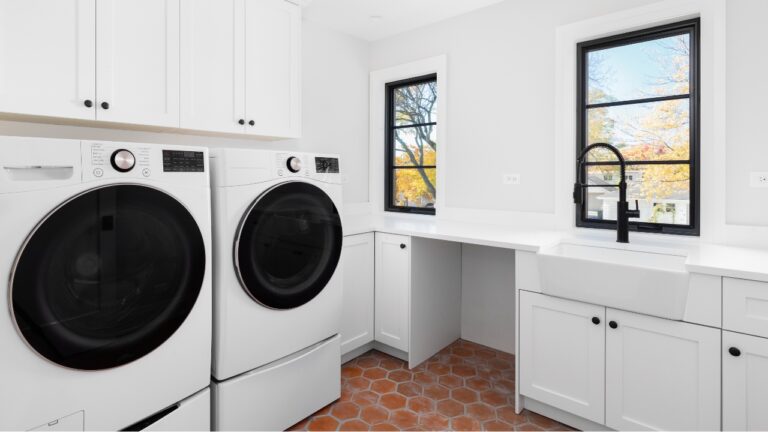You’re not ready for land if you think 2 acres is “a lot”
A lot of people dream about buying land, picturing wide-open space, peace, and privacy. But here’s the thing — two acres looks huge when you’re standing on a city lot, and small the second you start trying to live on it.
You quickly realize how fast that land disappears once you factor in driveways, a house, a septic system, and a few animals. If you’re imagining a mini-farm, workshop, and garden all fitting neatly together on two acres, you might be setting yourself up for a hard reality check.
The house alone eats more space than you think
A single-family home, driveway, and septic system can take up a big portion of the usable land before you’ve even added anything else. Add a garage, a shed, or a patio, and suddenly you’re left with far less than you expected. And depending on your soil, slope, or setbacks, a good chunk of that acreage might not even be buildable in the first place.
That’s before you realize how much space you need to maintain. Once you’ve mowed, fenced, and trimmed two acres in the summer heat, it doesn’t feel nearly as large as it looked on paper.
You’ll hit layout limits fast
Everyone dreams of spreading out when they buy land, but two acres fills up quickly when you start planning. You’ll need room for utilities, vehicles, water lines, garden beds, animal shelters, and maybe a play area or shop. Each thing needs access and space around it to function safely.
You’ll find yourself trying to fit square projects into round spaces, constantly compromising on placement. That “extra acre” starts looking pretty crowded once you factor in everything that comes with country living.
Animals change everything

If you plan on raising animals, two acres is tight. Even a small herd or flock can chew through grass faster than it grows. Goats need rotation space, chickens need predator-proofing, and a single cow or horse can tear up a pasture in no time.
When you don’t have enough acreage to rotate or rest your land, you end up relying on feed, which costs a lot more than grass. You also have to deal with the smell, mud, and manure buildup in smaller, confined areas — something no one talks about in those pretty “country life” photos.
Maintenance doesn’t scale the way you expect
Two acres sounds manageable, but the upkeep hits different once you’re doing it yourself. You’ll mow for hours, fight erosion, maintain fences, and keep driveways clear. None of it feels small once you’re hauling tools, shoveling gravel, or cutting back brush on a humid afternoon.
That kind of work adds up fast. A lot of people underestimate how much time and fuel they’ll spend maintaining land — especially when they thought they were buying “just enough” to make it easy.
Privacy takes more than space
Most people move to the country for privacy, thinking two acres will give them breathing room. It might — until you realize how far sound travels when there aren’t fences, trees, or buildings to block it. You’ll still hear your neighbor’s dog barking or their mower running, and they’ll hear yours too.
If you truly want to feel secluded, you’ll need trees, natural barriers, and good layout planning — and that takes more than a small stretch of cleared land.
You’ll want to expand sooner than you think

Two acres feels perfect when you’re starting out. But once you settle in and get a taste for rural life, most people start wanting more — more space for a bigger garden, more animals, more projects. It’s a natural progression that happens once you realize how fulfilling self-sufficiency can be.
The problem is, expansion isn’t always possible once you’re boxed in. If your land is already tight, adding new projects means tearing out something you already built.
The dream costs more than the land itself
Land isn’t the only expense. Fencing, equipment, soil work, driveways, and utilities often cost more than the property did. That’s where two acres can get tricky — you’re still paying for all the same infrastructure you’d need for five or ten acres, but with less flexibility on where it all goes.
If you don’t budget for those costs upfront, you can end up with an expensive piece of land that’s underdeveloped and hard to use.
You can still make two acres work — if you plan smart
All that said, two acres isn’t useless. It’s a great start if you’re realistic. You can still build a small homestead, grow food, or raise a few animals, but it takes smart design and clear priorities.
You’ll need to plan for efficiency, not excess — use multi-purpose spaces, keep everything close to the house, and avoid wasting land on big decorative areas. With the right layout, you can make it feel larger than it is, but it won’t happen by accident.
In the end, two acres isn’t “a lot.” It’s a manageable start — but only if you know what kind of work, planning, and compromise that truly means.
Like Fix It Homestead’s content? Be sure to follow us.
- I made Joanna Gaines’s Friendsgiving casserole and here is what I would keep
- Pump Shotguns That Jam the Moment You Actually Need Them
- The First 5 Things Guests Notice About Your Living Room at Christmas
- What Caliber Works Best for Groundhogs, Armadillos, and Other Digging Pests?
- Rifles worth keeping by the back door on any rural property
*This article was developed with AI-powered tools and has been carefully reviewed by our editors.







